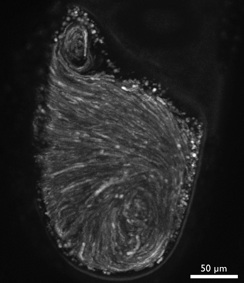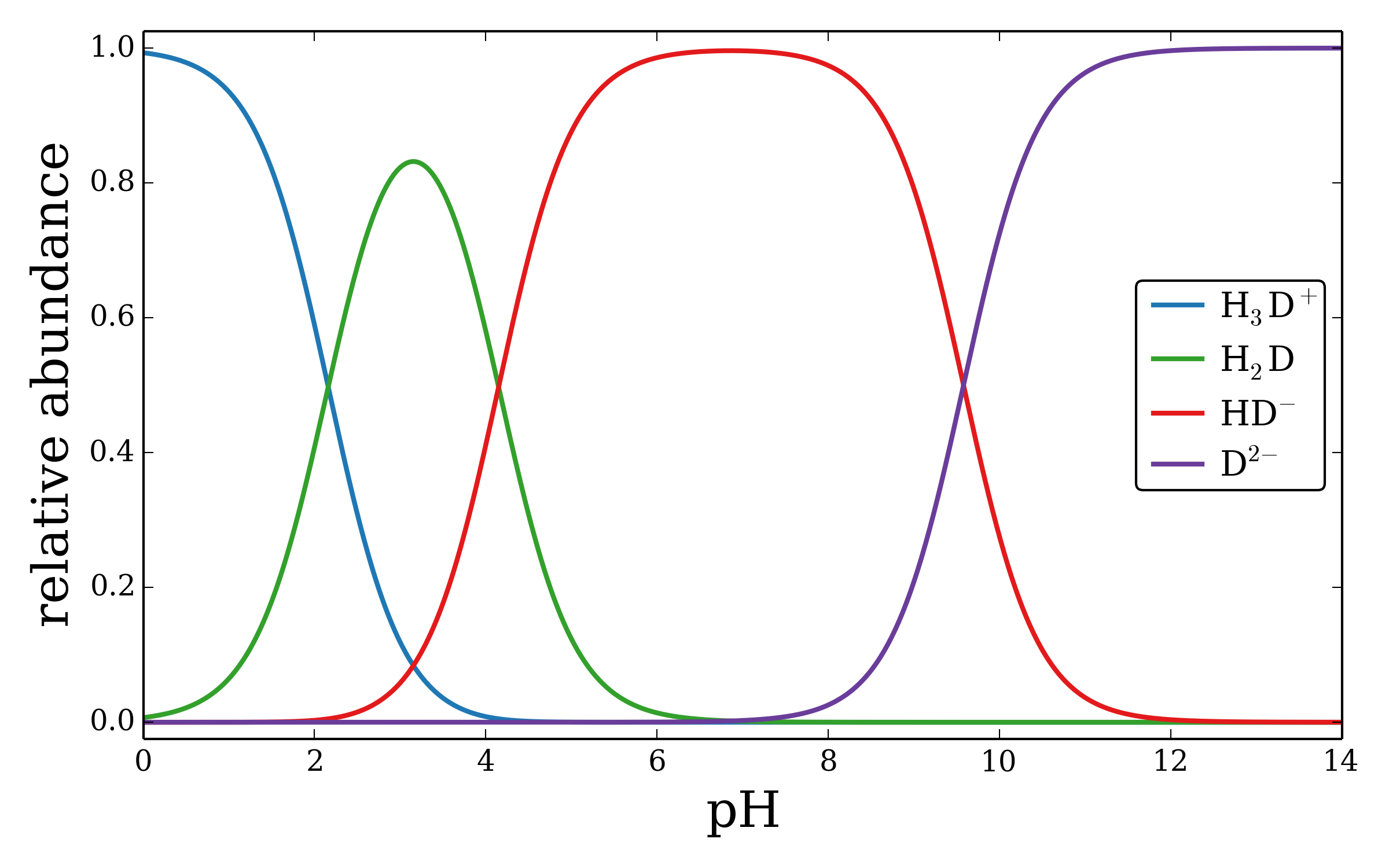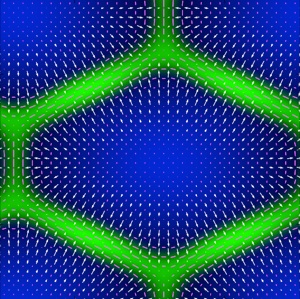Cytoplasmic streaming in Drosophila oocytes
Projection of 50 frames over 100 seconds of a streaming oocyte visualized with fluorescein-dyed yolk granules.
In the late stages of oogenesis in fruit flies, the cytoplasm of the oocyte undergoes rapid motion known as cytoplasmic streaming. The timing of the onset of streaming coincides with infusion of cytoplasm from neighboring cells into the oocyte, suggesting that streaming serves to mix cytoplasmic components. Importantly, if streaming starts prematurely, oogenesis fails. In collaboration with Margot Quinlan and Tom Mason at UCLA, I am investigating the regulation of the onset of streaming using both theoretical and experimental approaches. The key questions we are addressing are:
- What are the physical control parameters regulating streaming and to what genes are they connected?
- How do the rheological properties of the cytoplasm differ between streaming and non-streaming stages of oogenesis?
Equilibrium concentrations of solutions
Relative abundance of the different protonation states of aspartic acid as a function of pH, as calculated with our algorithm.
A classic, simply stated problem in chemistry with pertinence across many fields is this: given a solution of chemical species that may undergo a set of chemical reactions with known equilibrium constants, what is the equilibrium concentration of all species, assuming the law of mass action applies? We have developed an efficient globally convergent algorithm for solving this problem. We are currently developing the Equilibrium Toolkit (EQTK), a software package that uses this algorithm for equilibrium calculations and fitting of experimental titration curves.
Biochemical pattern formation in active fluids
Steady state of the activator-substrate depletion model in an active nematic fluid. The activator (green) reacts with the substrate (blue) and also regulates active stress. White arrows indicate flow, and purple lines indicate nematic order.
Shaping of cells and tissues is an inherently mechanical phenomenon, but is controlled by biochemical agents. For example, active processes, such as exertion of stresses by motor proteins, are subject to biochemical regulation. Conversely, the very compounds regulating the stresses are transported by them. Despite historically being treated largely independently, biochemical patterning and mechanical movements are closely coupled.
Motivated primarily by cytoskeletal structures and dynamics, we are exploring this coupling using a theory of active complex fluids. We seek to understand how nematic or polar order, advection and diffusion of biochemical active stress regulators, and fluid flow all influence each other.


